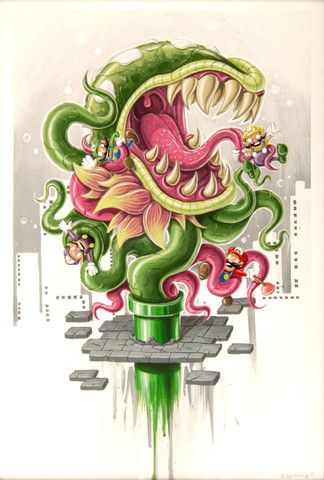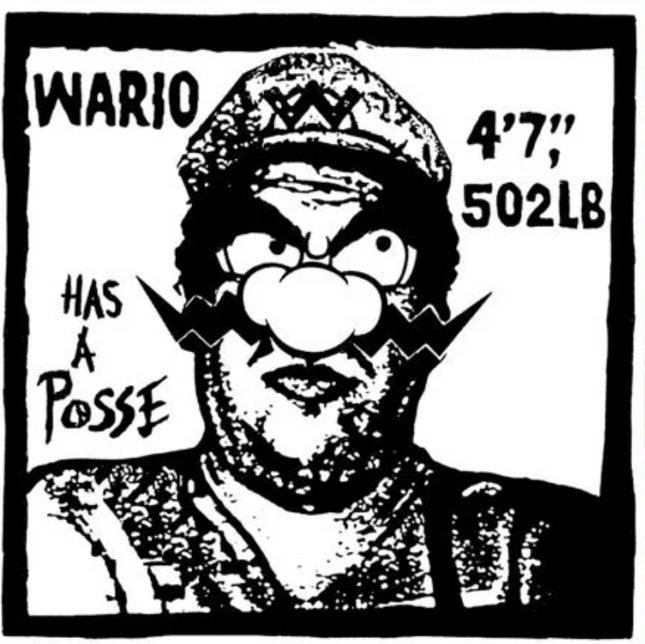
Mario Brothers

Brandon Sopinsky Little Shop of Plumbers Giclee Print by Brandon Sopinsky
Little Shop of Plumbers Artwork Giclee Limited Edition Print on Fine Art Paper by Pop Culture Graffiti Artist Brandon Sopinsky.
$129.00

Nate Duval Obey Wario, Destroy Mario Silkscreen Print by Nate Duval
Obey Wario, Destroy Mario 1-Color Silkscreen Print on Fine Art Paper by Pop Artist Nate Duval Limited Edition Artwork. 2012 Signed Limited Edition of 50 Artwork Size 18x18 Subversion in Pop Art Nate Duval's "Obey Wario, Destroy Mario" is a compelling silkscreen print that embodies the rebellious and satirical undertones of street pop art and graffiti artwork. This 2012 signed limited edition of 50, each measuring 18x18 inches, portrays the iconic antihero Wario in a style reminiscent of Shepard Fairey's "Obey" campaign, cleverly subverting mainstream pop culture and video game iconography. In "Obey Wario, Destroy Mario," Duval takes a familiar character from the beloved Mario franchise and flips the script, presenting Wario as a character in a game and as a symbol of counter-culture resistance. By appropriating the visual language of Fairey's work, which is itself a comment on propaganda and control, Duval challenges the viewer's perception of villains and heroes, suggesting a more complex narrative behind these characters. This piece is a vibrant example of how pop art continually evolves, drawing from diverse elements of culture to create new meanings and dialogues. Technique and Limited Edition Value The one-color silkscreen technique used by Duval in this artwork is a nod to the DIY ethos of street art, where simplicity and message converge to make a powerful statement. The stark black-and-white design accentuates Wario's mischievous persona, encapsulating the essence of graffiti's bold and direct approach to communication. The limited edition status of "Obey Wario, Destroy Mario" elevates its desirability. It offers an exclusive piece of Duval's thought-provoking art that is as much a collectible as a conversation starter. In contemporary art, "Obey Wario, Destroy Mario" by Nate Duval is a prime example of the intersection between the playful and the profound that characterizes Street Pop Art and graffiti Artwork. It is a testament to the power of visual art to reinterpret and critique cultural narratives, using the canvas as a battleground for ideas and ideologies. Duval's work continues to inspire and challenge, cementing his place as a significant voice in the narrative of modern pop and street art.
$129.00



